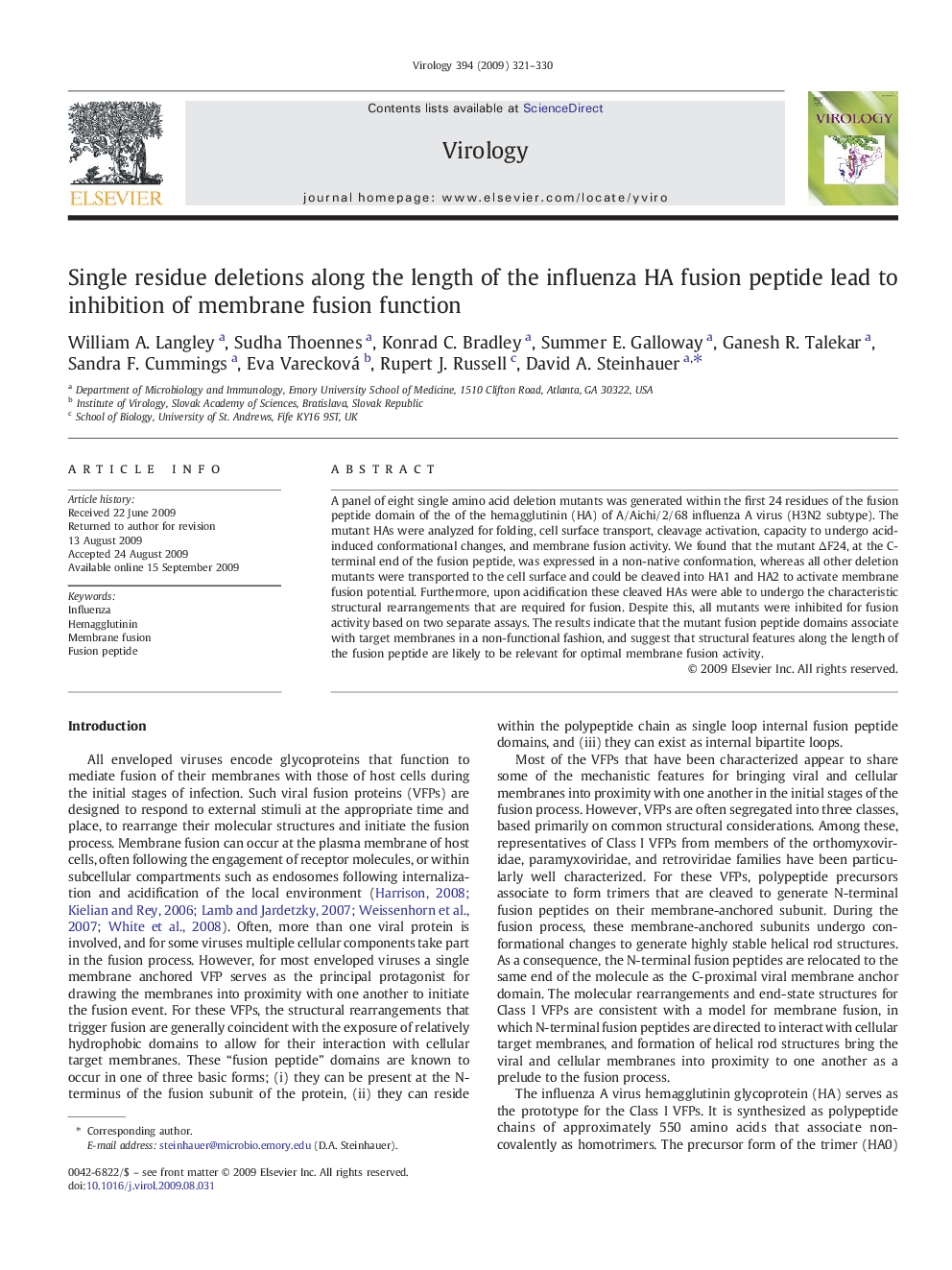| Article ID | Journal | Published Year | Pages | File Type |
|---|---|---|---|---|
| 3424956 | Virology | 2009 | 10 Pages |
A panel of eight single amino acid deletion mutants was generated within the first 24 residues of the fusion peptide domain of the of the hemagglutinin (HA) of A/Aichi/2/68 influenza A virus (H3N2 subtype). The mutant HAs were analyzed for folding, cell surface transport, cleavage activation, capacity to undergo acid-induced conformational changes, and membrane fusion activity. We found that the mutant ΔF24, at the C-terminal end of the fusion peptide, was expressed in a non-native conformation, whereas all other deletion mutants were transported to the cell surface and could be cleaved into HA1 and HA2 to activate membrane fusion potential. Furthermore, upon acidification these cleaved HAs were able to undergo the characteristic structural rearrangements that are required for fusion. Despite this, all mutants were inhibited for fusion activity based on two separate assays. The results indicate that the mutant fusion peptide domains associate with target membranes in a non-functional fashion, and suggest that structural features along the length of the fusion peptide are likely to be relevant for optimal membrane fusion activity.
